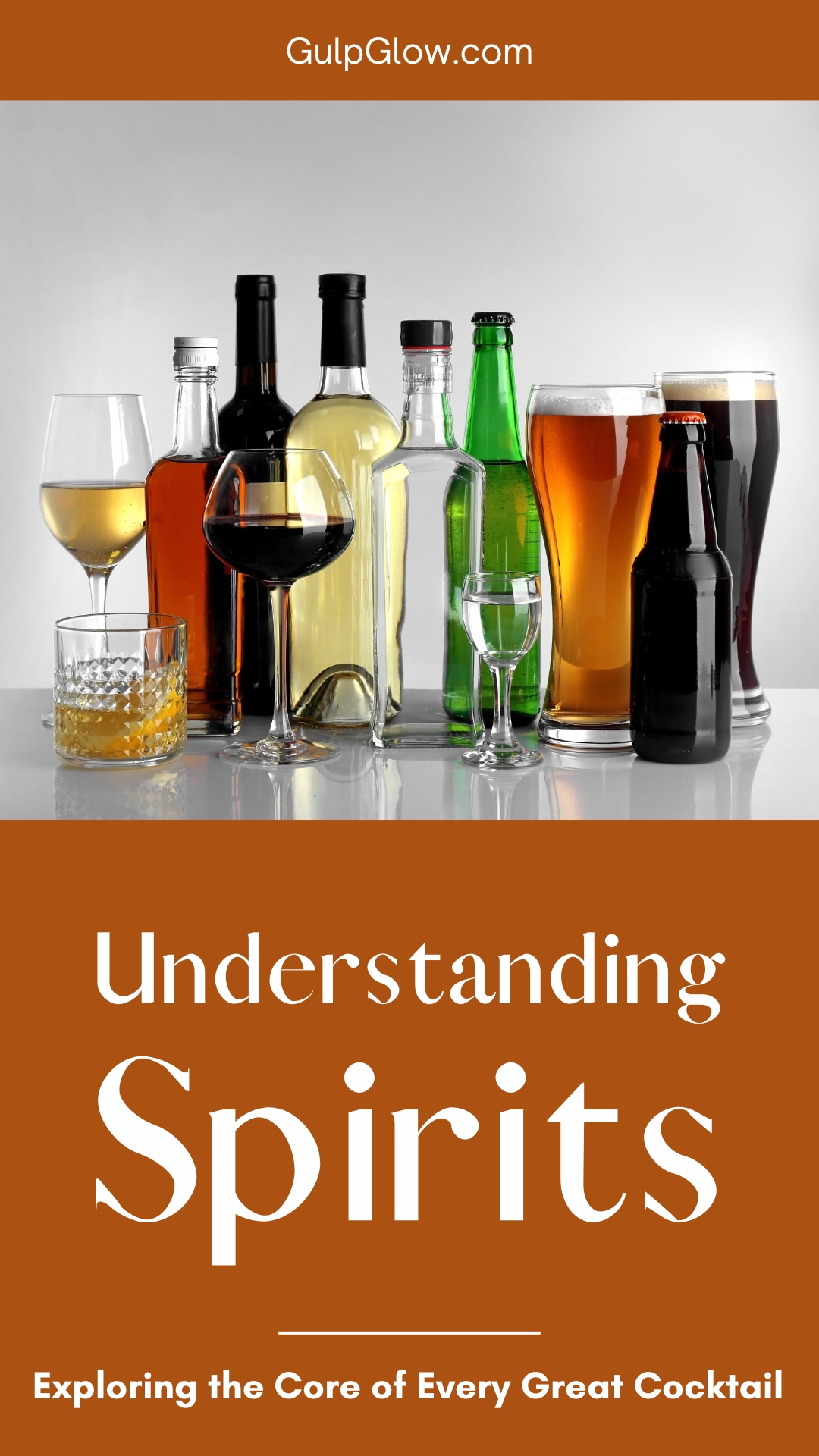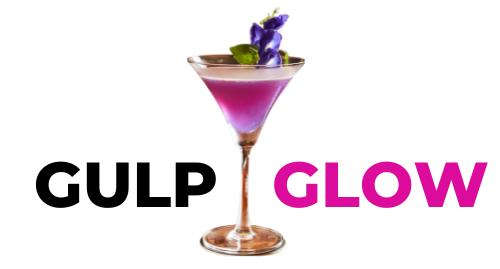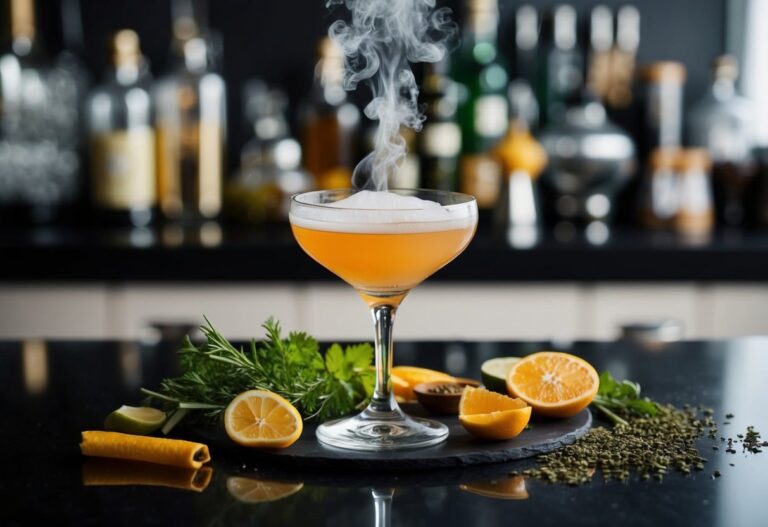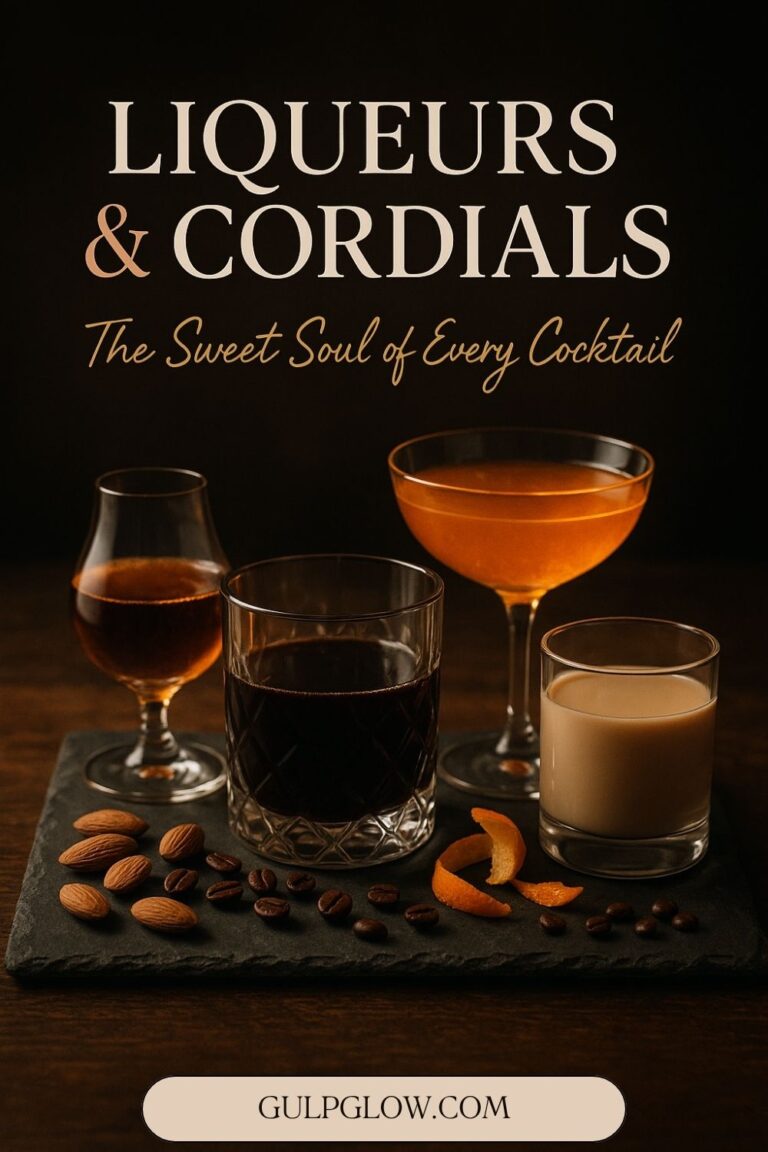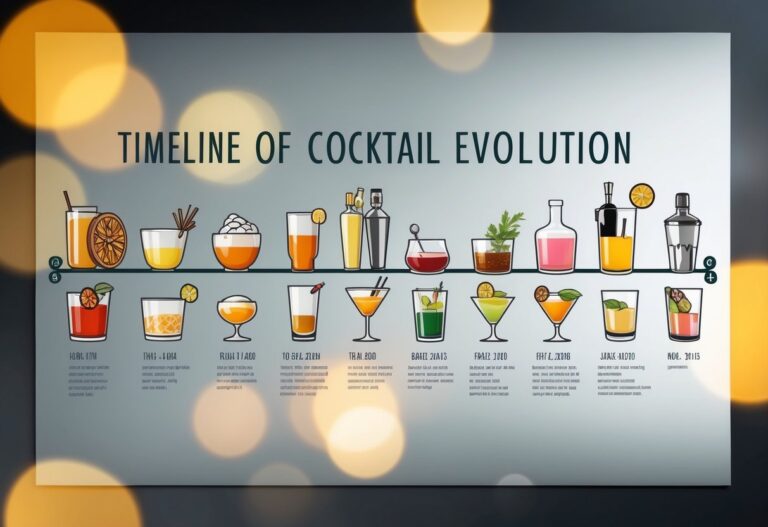Understanding Spirits: Exploring the Core of Every Great Cocktail
There’s something magical about a well-crafted cocktail. Whether you’re a seasoned bartender or a home mixology enthusiast, the foundation of every great cocktail lies in the spirits you choose. From a bold bourbon to a smooth vodka, understanding spirits is key to crafting drinks that impress. Think of spirits as the building blocks; they set the stage for flavors, aromas, and the overall experience.

Ever wondered why some cocktails taste better than others? It often comes down to the choice of base spirit and how it complements the other ingredients. For instance, gin brings a unique botanical twist to a Martini, while rum adds depth and sweetness to a Mojito. Each spirit has its own character and story, contributing to the final drink in ways that are subtle yet profound.
In today’s cocktail culture, mixologists are pushing the boundaries by using high-quality, artisanal spirits. They’re not just making drinks; they’re crafting experiences. By diving deeper into the world of spirits, you can start to appreciate the art and science behind every sip. Ready to explore?
The Art and Science of Mixology
Mixology is a fascinating field that combines art and science to create delightful cocktails. It blends expertise, creativity, and precision to craft balanced drinks that tantalize the taste buds.
Understanding Basic Techniques
Understanding the basic techniques in mixology is essential for any aspiring bartender. Shaking is used for cocktails with fruit juices, cream, or solid ingredients. Use a shaker to combine and chill the ingredients thoroughly.
Stirring, on the other hand, is for drinks with spirits and light mixers. It ensures a smooth blend without diluting the flavors too much.
Muddling involves crushing herbs and fruits to release their flavors. A muddler helps achieve this. Meanwhile, layering creates visually appealing drinks by carefully pouring liquids of different densities. Precision is crucial to keep layers distinct. Lastly, straining removes ice and solid bits from your mixed drink for a clean and clear presentation.
Advanced Mixology Skills
Advanced mixology takes your cocktail crafting to the next level. Molecular mixology uses techniques from science to create innovative drinks. For example, you can create foams, gels, and even cocktails made with dry ice for a dramatic effect. This approach requires a firm understanding of the ingredients’ chemistry.
Developing flavor balance skills ensures that your cocktails have the perfect mix of sweet, sour, and bitter. Experiment with fresh ingredients and syrups to achieve this. Precision in measuring and knowing the right ratios elevate your mixology skills. Presentation is also key. Use garnishes creatively to enhance both the look and taste of your drinks.
Spirits as the Foundation
Building a great cocktail starts with choosing the right spirit. Spirits like vodka, gin, rum, whiskey, and tequila not only define a cocktail’s flavor but also its character and style.
Categories of Spirits
When it comes to cocktails, there are several key categories of spirits to become familiar with. Vodka is known for its neutral flavor, making it versatile for many types of drinks. Meanwhile, gin, infused with botanicals like juniper berries, adds a unique aromatic element.
Rum brings a sweet, molasses or sugarcane flavor, perfect for tropical cocktails. On the other hand, whiskeys (including bourbon and rye) offer complex flavors ranging from smoky and peaty to smooth and caramel-like. Lastly, tequila, made from the agave plant, delivers a distinct, earthy profile ideal for vibrant cocktails like margaritas.
Liqueurs can also come into play. These are flavored spirits with added sugar, such as triple sec or amaretto, and they can add sweetness and complexity.
Selecting the Right Spirit for Your Cocktail
Choosing the right base spirit is essential to balancing the flavors of your cocktail. For instance, a vodka martini relies on vodka’s neutrality to allow the vermouth and garnishes to shine.
In contrast, a whiskey sour depends on the richness of whiskey to balance the tartness of lemon juice and the sweetness of simple syrup.
Gin works well in classic cocktails like the Negroni, where its botanical notes play harmoniously with the bitterness of Campari and the sweetness of vermouth. For a Mojito, white rum pairs perfectly with mint, lime, and sugar, creating a refreshing and balanced drink.
Experimentation is key. Try different brands and styles within each category to find what best suits your palate and the cocktails you love.
Essential Ingredients and Their Roles

Every great cocktail relies on a few key elements to create a balanced and enjoyable drink. These ingredients contribute different tastes, aromas, and visual appeal to each glass.
The Balancing Act: Sweet and Sour
Sweeteners and sour elements are crucial for balancing flavors in cocktails. Common sweeteners include simple syrup, honey, and various syrups. Simple syrup, made from water and sugar, is versatile and blends well with other ingredients.
Sour components, like lemon and lime juices, add a tangy kick that brightens the drink. The right mix of sweet and sour keeps your drink from being too cloying or too sharp. This balance ensures a satisfying and refreshing cocktail experience.
Herbs and Spices: The Aromatic Contributors
Herbs and spices bring complexity to cocktails. Fresh herbs like mint and basil add refreshing and earthy notes. Meanwhile, spices such as cinnamon and nutmeg provide warmth and depth.
Bitters are another essential aromatic ingredient. They are concentrated extracts of herbs, spices, and other botanicals that add a subtle layer of flavor. Common types include Angostura and orange bitters. Small doses of these potent additives can profoundly impact the overall taste profile of your drink, making them indispensable in many recipes.
Ice, Ice, Baby

Ice is more than just frozen water in your drink. It plays a crucial role in both chilling and diluting your cocktail, which can greatly impact the final flavor and texture.
The Role of Ice in Cocktails
Ice does more than just cool your drink down. It also dilutes the cocktail, making it more balanced. When you put ice in a drink, it gradually melts, adding water and thereby softening the intensity of the flavors. This is especially important for cocktails with high-alcohol content.
Moreover, ice enhances the texture and temperature of your beverage. The coldness can affect how different flavors are perceived, making some notes more prominent while suppressing others. Using the right type of ice, such as large cubes or crushed ice, can also affect how the drink feels in your mouth.
Chilling and Dilution Techniques
When it comes to chilling techniques, different methods work best for different types of cocktails.
Shaking is ideal for cocktails that include fruit juices, cream, or egg whites. It ensures rapid cooling and an optimized level of dilution.
On the other hand, stirring is best for spirit-forward cocktails like Martinis or Old Fashioneds, where you want to maintain clarity and minimize dilution.
For serving, you may also come across techniques like using pre-chilled glasses or adding large ice blocks to prevent too much dilution. Each technique has its merits and should be chosen based on what you want to achieve with your cocktail.
Cocktail Presentation: More Than Meets the Eye

Making cocktails isn’t just about mixing drinks. It’s a blend of art and science that touches on visual appeal, aroma, and creating a memorable experience. Key aspects are garnishing and the choice of glassware.
Garnishing with Intent
Choosing the right garnish is like adding the final touches to a painting. Think of slices, wedges, or twists of citrus like oranges, lemons, or limes. They don’t just look great; they also release aromas that can enhance your cocktail’s flavor.
Herbs are another popular choice. A sprig of mint or rosemary doesn’t just look pretty; it adds a burst of fragrance. Edible flowers can also make a bold statement. Combine them wisely to craft a drink that appeals to all senses.
Using a vegetable peeler to make citrus twists can add a mist of oils to the cocktail, giving it a fresher taste.
Glassware and Aesthetics
The glass you use can make or break your cocktail presentation. For a margarita, a wide-rimmed glass works best, while martinis shine in their signature V-shaped glasses. The chosen glass shapes the drink’s perception and enjoyment.
Chilled glasses create a frosty, inviting look. Ice is equally important; clear ice cubes or fancy shapes can elevate a drink’s elegance. Playing with colors can make your drink visually appealing, so clear glasses often work best for layers and colors to stand out.
From Classics to Modern Twists

The world of cocktails has evolved significantly over time. From timeless classics to inventive modern creations, the journey is fascinating.
History and Evolution of Classic Cocktails
Classic cocktails like the Martini, Old Fashioned, Margarita, and Negroni have been loved for decades. These timeless drinks often have simple ingredients but offer depth in flavor. Take the Martini: Just gin and vermouth, yet it’s a symbol of sophistication.
During Prohibition in the 1920s, bartenders moved to Europe, spreading cocktail culture worldwide.
In the 1960s, the Margarita became a popular summer drink in the United States.
By the late 20th century, the Negroni was a favorite for its balance of bitter and sweet. These classics have stood the test of time because they master the art of simplicity and balance.
Innovation in Modern Mixology
Modern mixology is all about creativity and new techniques. Bartenders now use artisanal bitters, craft spirits, and house-made syrups.
Drinks like the Enzoni mix elements of a Gin Sour and Negroni, invented by Vincenzo Errico in 2001.
Mojitos might get a smoky twist with infused spirits.
Even the classic Gin and Tonic can be transformed by adding unique garnishes like rosemary or exotic liqueurs. Innovation keeps the cocktail scene exciting.
New trends focus on sustainability. Bars minimize waste by using every part of an ingredient.
Today, you’re likely to be served a cocktail that’s not just a drink, but a whole experience.
Developing Your Cocktail Crafting Skills

To become a skilled mixologist, start with mastering basic techniques and then expand your knowledge through practice and exploration.
Learning the Basics
Every great home mixologist begins by understanding the essential components of cocktails. You should familiarize yourself with spirits, mixers, and garnishes. Spirits like vodka, rum, and gin form the backbone of most cocktails. Understanding these will help you create balanced and flavorful drinks.
Practicing basic techniques like shaking, stirring, muddling, and blending is also important. Shaking is ideal for cocktails with juices or cream, while stirring works for spirit-forward drinks. Experimenting with these methods helps you see how they affect taste and texture.
Don’t overlook the balance of flavors. A great cocktail balances sweet, sour, bitter, and alcohol. You can achieve this by using fresh juices and homemade syrups. Use ingredients like lemon juice for sourness or simple syrup for sweetness.
Expanding Your Mixology Repertoire
Once comfortable with the basics, start exploring more complex recipes and ingredients. Try adding liqueurs, bitters, and unique garnishes to diversify your cocktails. For example, using homemade syrups or exotic fruits can introduce new flavors.
Learn about more advanced techniques, such as layering, flaming, and infusing spirits. A skilled mixologist uses these methods to create visually stunning and flavorful drinks. Experimenting with different styles will enhance your craftsmanship and make your cocktails stand out.
Consider attending workshops or following online tutorials to keep learning. Watching professional bartenders can provide tips and tricks that you can practice at home. The more you practice, the better your cocktail-making skills will become.
Advanced Concepts in Mixology

In the world of mixology, understanding and mastering advanced concepts can take your cocktails from good to extraordinary. Deep diving into flavor profiles and mastering techniques for complexity are essential in creating the perfect cocktail.
Delving into Flavor Profiles
Flavor profiles are the backbone of any great cocktail. You want to think about sweetness, savoriness, bitterness, sourness, and even umami. Each element plays a role in balancing flavors and delivering that “wow” factor.
Why does a margarita taste so refreshing? It’s the balance of sour lime, sweet triple sec, and strong tequila. This balance is crucial. Different ingredients like herbs, spices, and fruits can add layers to the palate, giving your drinks depth and complexity.
Molecular mixology steps it up a notch. Creating caviars, foams, and infusions can dramatically alter a drink’s profile. Imagine a gin and tonic with a hint of rosemary caviar popping in your mouth. That’s the magic of molecular mixology.
Mastering the Techniques for Complexity
To create complex cocktails, you must master several techniques. Shaking is essential for mixing and chilling drinks like daiquiris, while stirring is key for drinks containing only spirits, like a martini. Each action has a purpose and can affect the final taste of your drink.
Muddling breaks down fruits, herbs, or spices to release flavors directly into the mix. It’s crucial for drinks like mojitos or old-fashioneds. Proper technique ensures you get the most out of your ingredients without overdoing it.
Balance is key. Too much muddling can result in a bitter taste. Use your senses to read the drink. Swirl, taste, and adjust. Always aim for balance—every element should complement the others, leading to the perfect cocktail.
Tools of the Trade

To craft a great cocktail, you’ll need more than just the right spirits. Essential tools play a crucial role in both creating and presenting your drinks. From must-have equipment to specialized tools for advanced techniques, every bartender’s setup matters.
Must-Have Equipment for Every Bartender
Every bartender, whether at home or in a bar, needs a set of essential tools. Here are some that you should definitely have:
- Cocktail shaker: A must for mixing drinks. There are two main types: the Boston shaker and the cobbler shaker. Both get the job done, but some prefer the two-piece Boston for its ease and versatility.
- Mixing glass: Great for stirred cocktails like the Martini or Manhattan. Use a sturdy glass to avoid accidents.
- Jigger: Precision is key in mixology. A jigger helps measure the exact amount of spirits needed, preventing your drink from being too strong or too weak.
- Bar spoon: Use this long spoon for stirring drinks and layering liquids. It’s also handy for retrieving garnishes from jars.
- Strainer: Always have a Hawthorne or julep strainer on hand to keep ice and solids out of your finished drink.
Other essentials include a muddler for crushing ingredients, a citrus juicer for fresh juice, and a good set of knives for slicing garnishes.
Utilizing Tools for Masterful Creations
Once you have your tools, the next step is knowing how to use them effectively. This isn’t just about following recipes but about mastering techniques.
Shaking: Use a shaker for cocktails with citrus or dairy. Shake vigorously for at least 10 seconds to chill and mix the ingredients well.
Stirring: For spirit-forward drinks like the Old Fashioned, use a mixing glass and bar spoon. Stir gently to combine and chill without diluting.
Muddling: For drinks like the Mojito, use a muddler to crush herbs and fruits gently. This releases essential oils and juices without over-mashing.
Precision is crucial. The correct measurements ensure the balance of flavors. Use a jigger to avoid guesswork.
For layering drinks, a steady hand and bar spoon create beautiful, distinct layers.
Building a Home Bar
Setting up a home bar can be a fun and rewarding experience. Let’s explore how you can select the right spirits and mixers and gather the essential tools to craft amazing cocktails.
Selecting the Right Spirits and Mixers
Choosing the right spirits is essential. Start with base spirits like vodka, gin, rum, tequila, and whiskey. These can serve as the foundation for many cocktails.
For mixers, stock up on items like tonic water, soda water, and ginger beer. Don’t forget the bitters; they add complexity and depth to your drinks. Homemade syrups and freshly squeezed juices can also elevate your cocktails, giving them a unique twist.
Pro tip: Keep a bottle of Maraschino Liqueur or Galliano L’Autentico for specific and classic cocktails. This offers versatility and adds a special touch to your home bar.
The Essential Tools for a Starter Kit
To build your home bar, you’ll need some essential tools. First, get a cocktail shaker and a set of jiggers. These help you measure and mix your drinks perfectly. Mixing glass and bar spoon are also crucial for stirring cocktails that need to be chilled but not shaken.
You’ll also need a muddler for crushing herbs and fruits, and a strainer to keep unwanted bits out of your smooth cocktail. Don’t overlook glassware. A mix of highball, rocks, and coupe glasses will cover most of your needs.
Finally, a small cutting board and a sharp knife are handy for slicing garnishes. With these tools on hand, you’re ready to impress your friends with a variety of tasty cocktails!
Frequently Asked Questions
Crafting cocktails involves understanding key elements, proper ratios, and versatile spirits. Here’s what you need to know to elevate your mixology skills.
What are the essential elements every cocktail should have?
Every good cocktail needs five basic elements: spirit, sugar, water, bitters, and citrus. These components balance the flavors. Think of a classic like the Old Fashioned—it uses a spirit (whiskey), sugar, water, and bitters.
Can you share the golden rule for crafting the perfect cocktail balance?
The golden rule for balance is the 3-2-1 ratio. This means 3 parts spirit, 2 parts sour (like lemon or lime juice), and 1 part sweet (like simple syrup). This ensures a well-balanced drink every time.
What spirits are considered the most versatile when mixing drinks?
Vodka, gin, and rum are incredibly versatile. Vodka blends seamlessly with various mixers. Gin adds botanical notes, making it a staple in drinks like a Gin & Tonic. Rum’s sweetness pairs well in tropical cocktails like a Mojito.
How does understanding the 3-2-1 cocktail ratio elevate your mixing game?
Mastering the 3-2-1 ratio simplifies complex recipes. By sticking to this formula, you ensure a harmonious blend of flavors without overwhelming the palate. It’s especially useful for those just starting in mixology.
For an aspiring bartender, what are the must-read cocktail books?
Start with “The Joy of Mixology” by Gary Regan and “Death & Co: Modern Classic Cocktails.” These books cover the art, science, and history of cocktails, providing recipes and techniques that can elevate your skills.
What’s the proper alcohol to mixer ratio to use for classic drinks?
For classics like Jack and Coke, aim for a 1:2 ratio—one part alcohol to two parts mixer. This ratio makes sure the drink isn’t too strong or too diluted, creating a balanced and enjoyable beverage.
